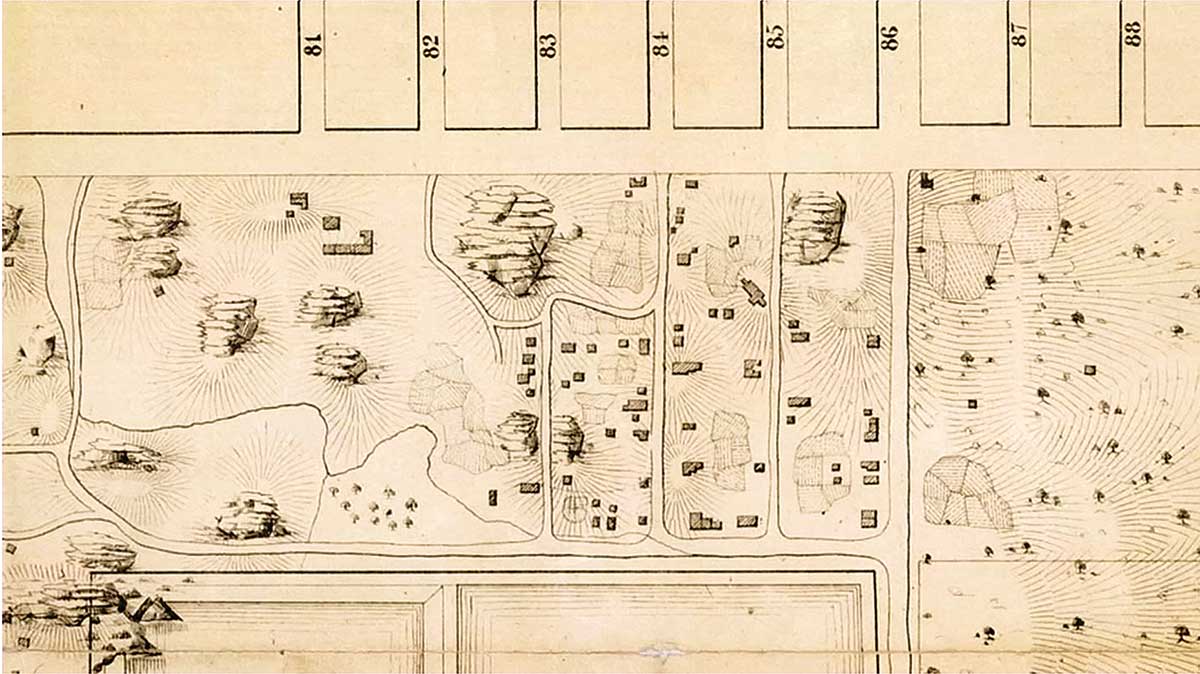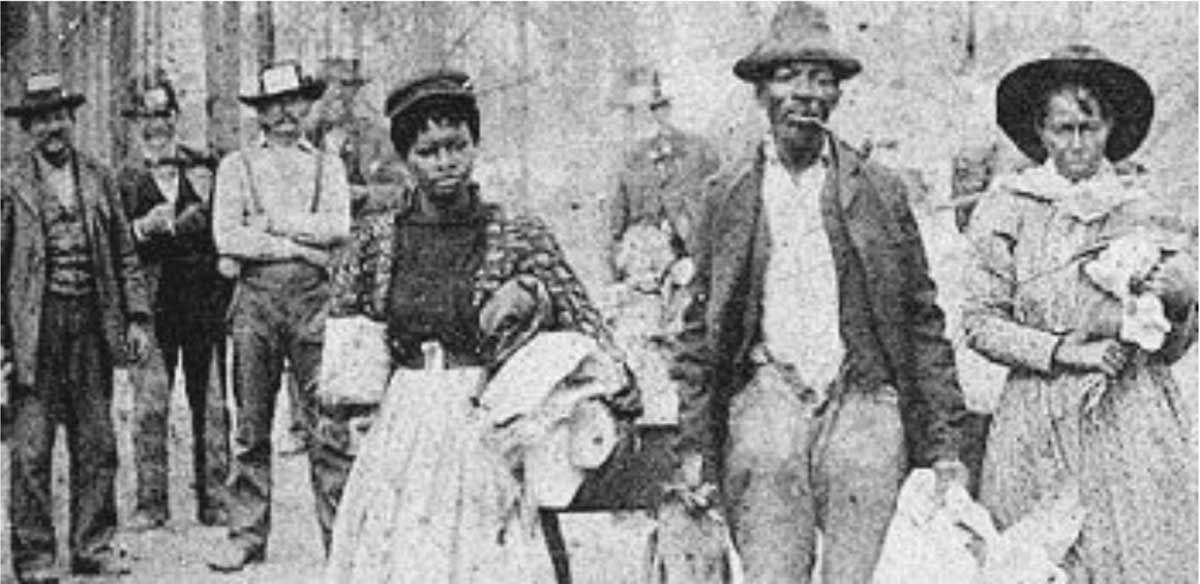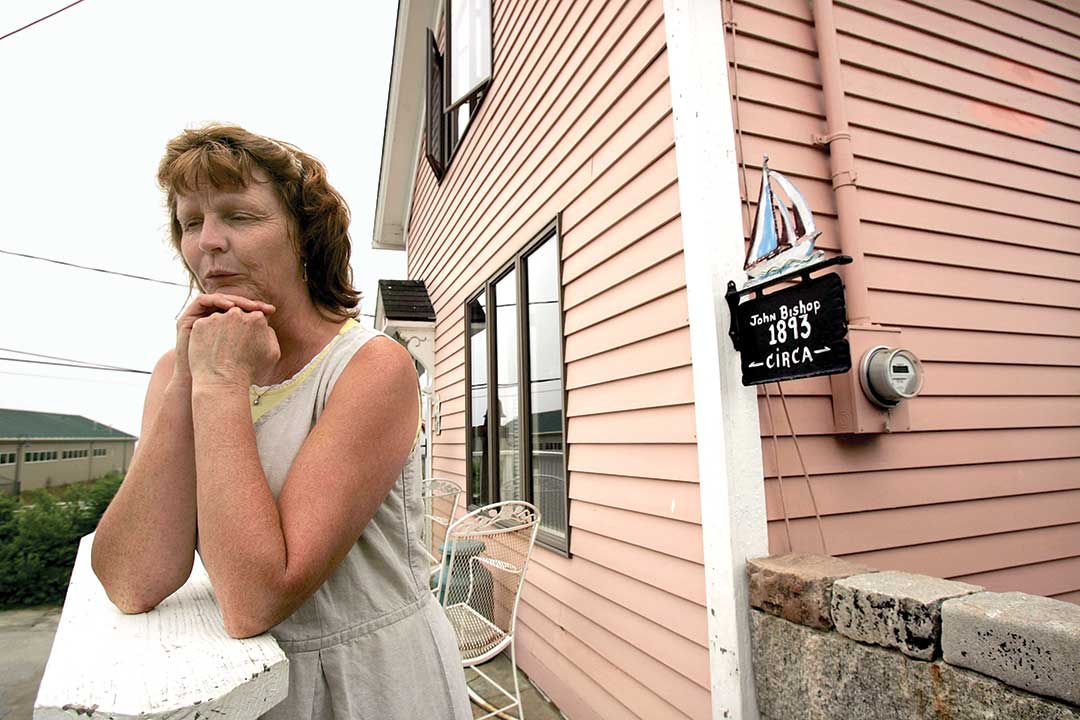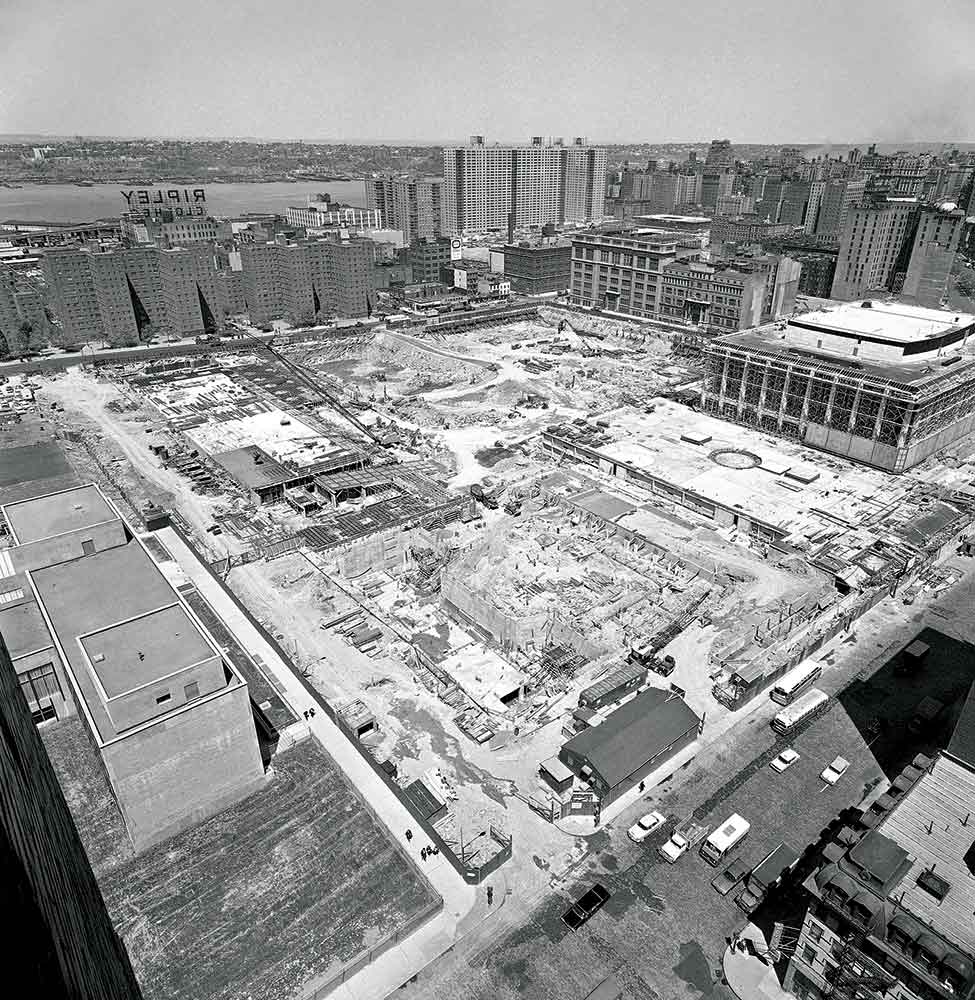In 1825, John and Elizabeth Whitehead divided their Manhattan farmland into 200 lots and began selling it off. I know it’s hard to imagine Manhattan as ever having farmland, but “the city” remained densely clustered on the southern tip of the island well into the 19th century.
The first three lots of the Whiteheads’ land were bought for $125 by a shoe shiner named Andrew Williams. Williams was a Black man, and the Whiteheads were among the very few white landowners who would sell to Black people back then.
Williams was a member of the New York African Society for Mutual Relief. The group sought to help Black people buy real estate and was moderately successful at helping the Black middle class gain a foothold in New York. Other Black families began buying land from the Whiteheads in the area around Williams’s new plot. A Black store clerk named Epiphany Davis bought 12 lots for $578. The African Methodist Episcopal Zion Church bought six lots, and the village became even more desirable to Black middle-class families. Irish immigrants, another group of “undesirables” the Whiteheads were willing to sell to, bought many of the other lots. The Whiteheads ended up selling half of their lots to Black people. The little enclave they made was known as Seneca Village. According to census data, in 1855 Seneca Village had 264 residents, three churches, three cemeteries, and two schools.
Seneca Village was a home of political power for Black people as well. Remember, in 1855 there were no 14th or 15th Amendments. There was no guaranteed right to vote for African Americans, even free ones living in the North. To be eligible to vote in New York State in the 1850s, a Black man needed to be a male landowner in possession of $250 worth of property and have state residency for three years. Neither the property nor the residency requirements applied to white men. Seneca Village was a way for some Black men to meet that property requirement. Of the 100 Black people eligible to vote in New York State in 1845, 10 lived in Seneca Village. Five years later, in 1850, of the 71 Black property owners in New York City, 20 percent lived in Seneca Village.
By 1857, however, the entire area had been razed to the ground. The homes and churches were demolished, and the people were scattered. Seneca Village did not fall to some natural disaster, or even the ubiquitous mob of angry whites that shows up, again and again, throughout American history to lynch Black people who seem to be getting ahead. No, Seneca Village was destroyed because in 1853 New York passed a law allowing for the construction of Central Park.
Popular
"swipe left below to view more authors"Swipe →
Seneca Village was located in what is now thought of as the west side of Central Park. Its boundaries extended from about 82nd Street to 89th Street, between what is now Central Park West and where Seventh Avenue would be if it extended straight through the park. Seneca Village was a small and arguably unnecessary part of the 775 acres of land set aside by the legislature to create the park.
The government had the authority to buy or “take” the land for Central Park under the doctrine of eminent domain, which is enshrined in the Fifth Amendment of the Constitution. Eminent domain is the theory that all land, even private property, can be acquired by the government if it is in the public interest. The relevant part of the Fifth Amendment reads:
No person shall be…deprived of life, liberty, or property, without due process of law; nor shall private property be taken for public use, without just compensation.
Eminent domain is such a core concept of sovereignty that the US Supreme Court has said that it doesn’t even require a constitutional provision. But compensation for exercising that inherent sovereign authority does require some constitutional language.
To understand eminent domain, you have to appreciate that, if you start from first principles, all land is “public.” All land is just there, claimed only by whoever or whatever happens to be standing on it, and can physically defend it, at a particular time. It’s all God’s land, if you’re into that sort of thing. Or the king’s land, if you lived in pretty much any pre-Enlightenment society.
“Private” property has surely always existed in some form—I’m certain that some of the ancient art we’ve uncovered and put in our museums was actually early modern “Beware of Bear” signs fashioned by cavemen who were sick of being solicited at their homes. But as a standing inalienable legal concept, fully private property that rulers are not allowed to violate at will is new (in geologic time) and kind of weird. Entire philosophical tracts on government (including the only one most people have ever heard of: John Locke’s second treatise on government) have been written to explain, more or less, why private property should exist at all. Private property is not the natural or inevitable result of settled society.
Different legal systems treat the concept of private ownership differently. Take, for instance, the initial “purchase” of Manhattan Island by the Dutch. In 1626 Peter Minuit, director of New Netherland, reported that he bought Manhattan for 60 guilders (about $24, according to 19th-century historians). It would be too glib and easy to say that the Indigenous people who sold him the land didn’t understand private property. As Arizona State law professor Robert Miller makes clear, they likely did have a fully functional concept of property “exclusivity.” But we would probably call the land deal a “lease,” not a “purchase.” In his book Law in American History, University of Virginia law professor G. Edward White makes the case that the Native Lenape were “not relinquishing the island, but simply welcoming the Dutch as additional occupants.” It was the colonizers who didn’t understand or respect the deal.
Unlike private property, eminent domain does flow naturally and inevitably from the concept that ownership exists only insofar as the state is able to secure and defend the territory. If the state needs your land for some public purpose, and you can’t raise an army to oppose the state, your land is forfeited. Living in a state that is willing to pay for the private land it needs to take is just a modern invention for property owners who would otherwise get screwed if they happen to live on land the state needs. Dutch jurist Hugo Grotius, whose On the Law of War and Peace from 1625 is one of the first real texts of international law, wrote: “The property of subjects is under the eminent domain of the state…. But when this is done the state is bound to make good the loss to those who lose their property.” That’s the nice way of saying: “There wouldn’t be a West India Company without these fortifications, but here, take some money and go.” The Dutch didn’t really “own” Manhattan in 1626, because they couldn’t defend Manhattan in 1626. Indeed, Wall Street is so named because there used to be a defensive freaking wall there. The wall was built by slaves the Dutch also “bought” and brought with them to defend the settlement of New Amsterdam from attacks by the Indigenous Americans, the British, or pirates.
Now, I would love to tell you what James Madison, author of the Fifth Amendment, meant by “just compensation.” But I can’t. I can’t even tell you why eminent domain is tacked onto this amendment and not some other. I can tell you that Madison’s initial proposed language was: “No person shall be…obliged to relinquish his property, where it may be necessary for public use, without just compensation.” Congress changed it to its final version, but I can’t tell you why. No record of whatever debate may have occurred exists. No Federalist Paper focuses on this particular topic.
What I can tell you is that when white people want your shit, they will take it, and Black people will rarely be justly compensated for the destruction of their wealth.
Fighting against eminent domain has become a bit of a cause célèbre for libertarian forces on the right. They’ve even given it one of their cool, right-wing names, so that their entire objection can fit on the bumper sticker on somebody’s truck. They call eminent domain actions “takings.” Get it? The government is “taking” your stuff; who could support that, right?
Much of the heat on the right is over what constitutes a taking at all. Eminent domain certainly refers to physical takings: You had some land and now you don’t. But arguably, eminent domain should also come into play when the government dictates how you are allowed to use your property. These instances are called “regulatory takings,” and they happen when, say, the government declares your private property a national historic site and thus prevents you from demolishing it and building a CVS. How much compensation is the government required to give out then?
Another large area of contention happens when the government takes only part of your property. Let’s say that the government wants to place a few wind turbines on part of your land. The private property owner can still live there, so is it a taking at all? What if the wind turbines are super noisy? What if they “cause cancer”? (Author’s note: They don’t.) What if they’re really quiet but super ugly? What is the just compensation for ruining your view?
If you know anything about Republicans, you understand why the right-wingers get up for this fight, and you can see why liberals are generally on the side of the government when it comes to eminent domain. We need things like wind turbines and historic sites much more than we need libertarians bitching and moaning about whether they received enough of a vig from the government for their troubles.
If I were a Republican, I would spend the next 30 minutes of your life telling you about a 2005 case called Kelo v. City of New London. Conservatives complain about this case more than Pharaoh complained about Yahweh. The case is about a white lady, Susette Kelo, who didn’t want to sell her pink house. In a twist to the standard eminent domain case, New London, Conn., wanted to acquire her land to then sell it to a private developer, which created a Supreme Court battle. In a controversial 5-4 decision, the liberal wing of the court, joined by Anthony Kennedy, ruled that taking private property and then selling it to private interests for economic redevelopment was indeed a constitutional use of the government’s eminent domain power.
Conservatives went nuts. They made a fucking movie about this lady and her stupid house. Parts of the house were moved and “rededicated” at a new site, and it’s now some kind of monument to the fight against big government overreach.
Reluctantly, I agree with the Republicans about this issue. Clarence Thomas, in dissent in Kelo, said that the majority was converting the “public use” allowed by the Fifth Amendment into any vague promise of a “public purpose.” And, God help me, I think Thomas was right about that. The government should not use its powers of eminent domain to essentially acquire land on the cheap for business interests, just because those businesses promise that there will be some public purpose behind their profit motive. For instance, I don’t think the government should be involved in acquiring land to build sports arenas that will be owned by wealthy team owners and used to pump the valuation of their sports franchises into the billions.
My problem with Kelo is that centering this issue on a white homeowner and the legal distinction between public “use” versus “purpose” ignores entire Black and brown communities that have been wiped off the damn map by the government’s use of eminent domain. Where’s the movie about Seneca Village? Where’s the movie about the Black and Latino renters who get crushed every time the local team wants a new stadium? Where’s the movie about all the people and communities who were destroyed by former New York City parks commissioner Robert Moses?
Yeah, if we’re going to talk about eminent domain, we’re going to talk about how many of our roads, highways, and beaches were figuratively built on top of the bones of Black and brown people who used to live there. I’m sorry, I just can’t get up for this lawyer fight between public use and public purpose, when the government’s definition of public use is so often merely “playthings for white people,” as if that’s an acceptable constitutional definition of the term.
The first time I heard about eminent domain was in college, where I read Robert Caro’s seminal book The Power Broker: Robert Moses and the Fall of New York. Moses is responsible for so much of the way modern cities look and feel, and not just in New York, because his methods were imported and copied throughout the country. Moses was a destroyer of Black and brown communities. And eminent domain is what allowed that asshole to be racist at an industrial scale.
If I may summarize one of the greatest modern biographies ever written in two sentences: Robert Moses was a deeply racist man who built highways, bridges, parks, beaches, and even housing projects by bulldozing the hopes, dreams, and often homes of people in his way. His main tactic for acquiring land for his projects was identifying vulnerable minority or immigrant communities, declaring their homes and land “blighted,” and then using the government’s power of eminent domain to evict people from their homes over their objections and for a fraction of what their communities were actually worth.
Declaring a community “blighted” or a home “condemned” is a favorite trick of the government when it wants to avoid paying just compensation for the land it takes. It’s what Moses did, repeatedly, throughout New York City in the 1930s, ’40s, ’50s, and into the ’60s. Moses would target a community, have state assessors declare it a “slum,” and acquire the land through eminent domain at cut-rate prices. And it’s a method many cities and states would copy under the guise of “urban renewal.”
Urban renewal laws authorize the state to seize land it has designated blighted and deteriorated in some way. The New York State urban renewal law is codified in Article 15 of New York Consolidated Laws, Section 500. Look at how the law describes the purpose of the policy in Section 501:
There exist in many municipalities within this state residential, non-residential, commercial, industrial or vacant areas, and combinations thereof, which are slum or blighted, or which are becoming slum or blighted areas because of substandard, insanitary, deteriorated or deteriorating conditions, factors, and characteristics, with or without tangible physical blight. The existence of such areas constitutes a serious and growing menace, is injurious to the public safety, health, morals and welfare, contributes increasingly to the spread of crime, juvenile delinquency and disease, necessitates excessive and disproportionate expenditures of public funds for all forms of public service and constitutes a negative influence on adjacent properties impairing their economic soundness and stability, thereby threatening the source of public revenues.
As Yoda might say, “Mudhole? Slimy? My home, this is.” Clearing out “the slums” and replacing run-down and dilapidated-looking buildings with fresh, shiny, economically productive buildings and infrastructure sounds like a great plan, unless you are the person being cleared out. Then, not only are you being displaced from your community, your “just compensation” becomes slum prices, leaving you only enough money to go and try to find a different slum to live in. The government usually doesn’t pay people in so-called blighted communities what their homes are worth, and never pays them what the land will be worth after all the happy-clappy urban renewal takes place.
This is why eminent domain so often takes advantage of vulnerable people and communities. The government doesn’t actually want to pay a fair price for the land and doesn’t want to fight legal battles against well-connected and powerful communities who can protect their property and interests in court.
“Condemnation” is what happened to Susette Kelo’s property, before the government took it.
But again, this tactic didn’t just start happening in 2005, and to white people. We can go all the way back to the creation of Central Park a century and a half earlier and find the same tactics at play. An enormous park measuring 775 acres (today the park is actually 843 acres) in the middle of the island was not actually the first plan for an open green space in New York City. The first suggested site was a parcel of land, about 150 acres, along the East River between what is now 66th Street and 75th Street, known as Jones’s Wood. In 1851, the New York State Assembly and Senate both passed resolutions to take the Jones’s Wood property through eminent domain. It was happening.
But the wealthy white landowners—John Jones’s heirs, and another wealthy New York family, the Schermerhorns, whose property was included in some of the proposals for the park—didn’t want to sell the land. Understand, neither the Joneses nor the Schermerhorns lived on the property full-time; this was the 1850s, and the Upper East Side might as well have been a Mars colony. The Joneses’ and the Schermerhorns’ primary residences were downtown, where any self-respecting wealthy New Yorker would live. These people just didn’t want to sell their undeveloped “country” estates uptown to the city for a public works project. So the families sued New York State to block the state’s taking of their land.
Did I mention that the Joneses and the Schermerhorns were white? They were white. And since they were white, all of the stuff I said earlier about the foundational principles of state sovereignty that eminent domain rests on, all of the stuff I said about how, legally speaking, the concept of eminent domain is so ingrained in the very conception of property that you scarcely need constitutional language acknowledging it, all of that stuff comes with the caveat of “unless you are wealthy and white.”
Of course, the Joneses and the Schermerhorns won their lawsuit against the state. Of course they did. A court ruled that the state resolution to acquire the property through eminent domain violated the due process rights of rich white people. Apparently the resolution allowed the state to back out of the deal but didn’t allow the Joneses and the Schermerhorns the same right. I’d point out that of course the Joneses and the Schermerhorns had no right to “back out” of the deal, because the state was using its unquestionable sovereign power to force the families into taking the “deal” whether they liked it or not, but now I’m just shaking my fist at white judges who have been dead for 150 years.
And so, instead of displacing two white families who didn’t even use their land as their primary residence, the city went forward with a new plan that included displacing over 200 Black people in Seneca Village who had built up an independent Black community on some of the only land they were allowed to purchase. All of the tricks that would later be deployed against Black communities in the 20th century were used against the people of Seneca Village in the 19th century. The newspapers called their land a “swamp.” The media called the people living there “squatters” (even though, again, 20 percent of the Black homeowners in all of New York City lived there), and, of course, the papers referred to their community as a “n***er village.”
The residents of Seneca Village also went to court to object to the government taking their land, but unlike the wealthy white families, they lost in court every time. The landowners were paid an average of $700 per lot. Andrew Williams, that shoe shiner turned landowner who bought the first lots from the Whiteheads, was paid $2,335 for his three lots and house, even though he initially asked for $3,500 in “just compensation.” Even when taking his land and destroying the community he helped to found, the state couldn’t be bothered to pay the man what he asked for.
The Time Warner Center is a relatively recent construction that sits right at the southwestern entrance to Central Park. It sits on about two acres of land and is valued at approximately $1.5 billion.
New York City should go and find all the descendants of Seneca Village and pay them what their land is actually worth. I bet the government would be more cautious and fair when using its power of eminent domain if the compensation were ever just.







